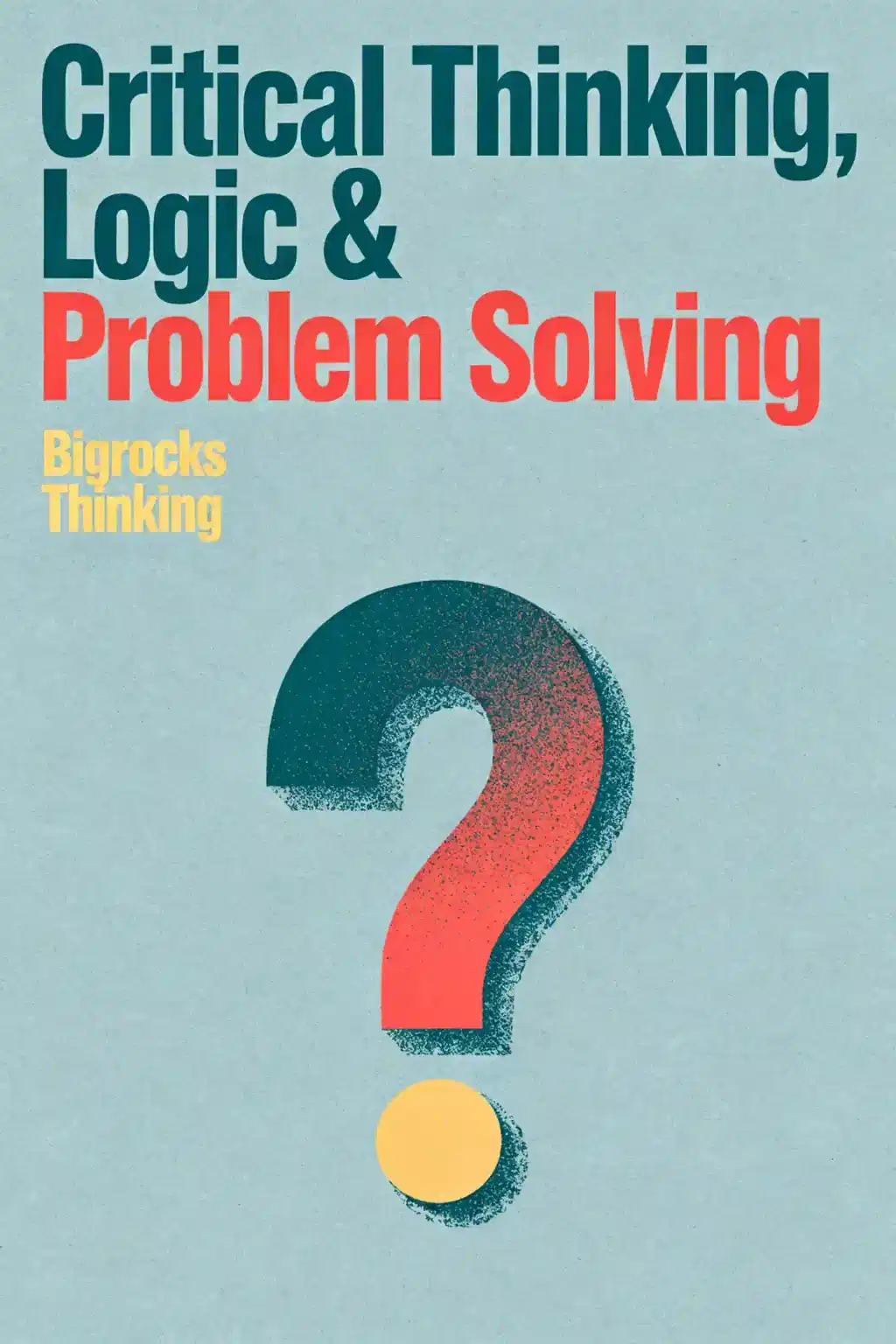What is
Critical Thinking, Logic & Problem Solving about?
Critical Thinking, Logic & Problem Solving by Bigrocks Thinking is a practical guide to enhancing decision-making, systematic problem-solving, and logical communication. It teaches step-by-step methods to evaluate information, avoid biases, and apply structured frameworks like logic trees. The book also covers storytelling techniques and strategies for real-world applications in careers, education, and personal relationships.
Who should read
Critical Thinking, Logic & Problem Solving?
This book suits professionals, students, and anyone seeking to improve analytical skills or navigate complex decisions. It’s particularly valuable for managers, entrepreneurs, and individuals aiming to sharpen arguments, detect logical fallacies, or communicate ideas effectively. Readers interested in self-improvement or scientific problem-solving methods will find actionable strategies.
Is
Critical Thinking, Logic & Problem Solving worth reading?
Yes, for its hands-on approach to problem-solving and critical analysis. Readers praise its clear frameworks (e.g., logic trees, prioritization matrices) and exercises. However, some critique its lack of academic depth and unclear authorship. If you seek actionable techniques over theoretical discussion, it’s a worthwhile read.
What problem-solving framework does the book recommend?
The book outlines a 5-step problem-solving process: 1) Define the problem, 2) Gather reliable data, 3) Generate solutions using logic trees, 4) Evaluate options with pros/cons matrices, and 5) Implement and monitor outcomes. It emphasizes iterative testing and collaborative input to avoid biases.
How does the book address logical fallacies?
It identifies common fallacies like correlation-causation confusion, middle-ground fallacies, and false dilemmas. The authors provide examples to spot flawed arguments in media, workplace discussions, and personal decisions. Techniques include asking targeted questions to dissect assumptions and implications.
What communication strategies does
Critical Thinking, Logic & Problem Solving teach?
The book advocates for structured storytelling using the “purpose-context-action” model and logic flow trees. It also teaches critical listening to identify unspoken motives and craft persuasive arguments. Methods like issue trees help organize complex ideas for clear presentations.
How does this book compare to
Thinking, Fast and Slow?
While Daniel Kahneman’s work explores cognitive biases theoretically, Critical Thinking, Logic & Problem Solving focuses on practical tools like decision matrices and logic trees. Bigrocks Thinking emphasizes actionable steps over psychological theory, making it better for readers seeking immediate problem-solving applications.
Can the techniques in this book improve workplace performance?
Yes. The book’s frameworks help streamline decision-making, resolve team conflicts, and prioritize tasks. For example, its “constraints-driven creativity” method turns limitations into innovation opportunities. Managers can apply communication strategies to align teams and reduce misunderstandings.
What are the main criticisms of
Critical Thinking, Logic & Problem Solving?
Critics note the lack of author credentials, oversimplified explanations, and repetitive exercises. Some reviewers argue it doesn’t address advanced topics like emotional intelligence’s role in decision-making. However, most agree it offers a solid foundation for beginners.
Does the book provide real-life examples for its concepts?
Yes. It includes scenarios like negotiating a raise, evaluating pet ownership, and managing project risks. Case studies demonstrate applying logic trees to career decisions and using prioritization matrices for daily task management.
What tools does the book recommend for complex decisions?
Key tools include:
- Logic Trees: Break problems into sub-issues.
- Decision Matrices: Weight factors like cost and impact.
- Prioritization Grids: Rank tasks by urgency/importance.
- Issue Trees: Map arguments for persuasive storytelling.
Why is
Critical Thinking, Logic & Problem Solving relevant in 2025?
With AI and rapid workplace changes, the book’s emphasis on adaptable thinking and bias detection remains critical. It equips readers to navigate misinformation, automate decision analysis, and collaborate in hybrid teams—skills vital for modern problem-solving.




















